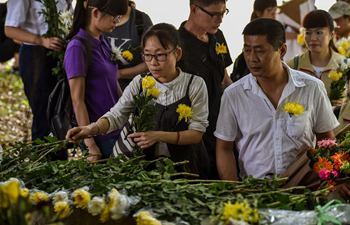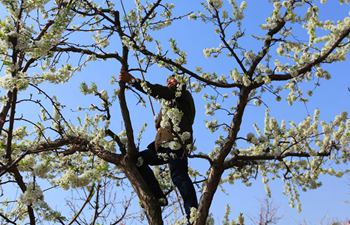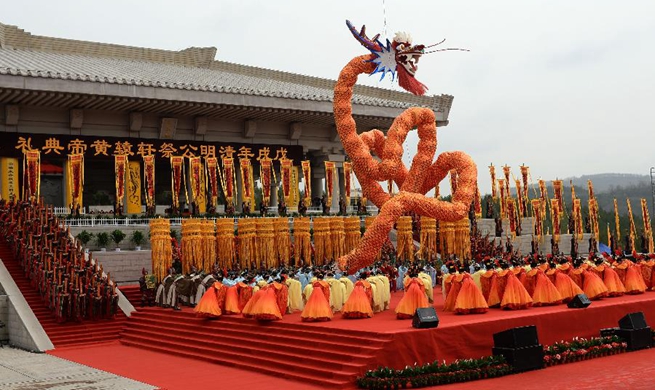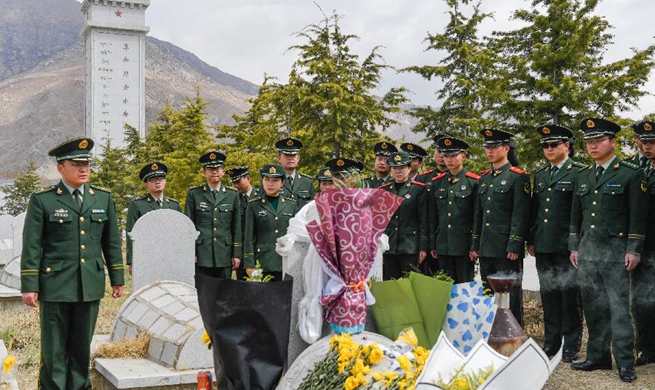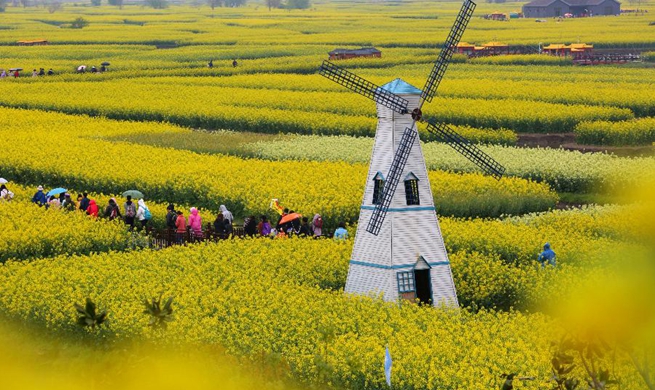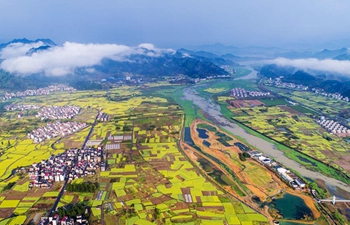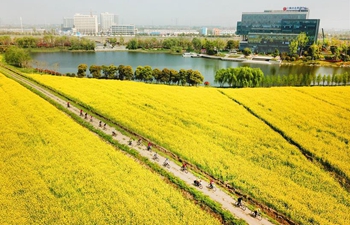by Sovan Nguon
PHNOM PENH, April 5 (Xinhua) -- Chinese Minister of Water Resources E Jingping said on Thursday that the Lancang-Mekong Cooperation (LMC) would not substitute, but coordinate with other sub-regional mechanisms for the sustainable development of the Lancang-Mekong River.
"It will not replace any sub-regional mechanism. Instead, it will coordinate with existing mechanisms such as the Greater Mekong Sub-region Economic Cooperation (GMS) and the Mekong River Commission (MRC), promoting mutual development and injecting new impetus into the China-ASEAN cooperation," he said in a speech during the 3rd MRC summit in northwestern Cambodia's Siem Reap province.
The MRC summit was attended by Cambodian Prime Minister Samdech Techo Hun Sen, Thai Prime Minister Prayut Chan-o-cha, Vietnamese Prime Minister Nguyen Xuan Phuc, and Lao Prime Minister Thongloun Sisoulith as well as a high-level representative from Myanmar.
"China is willing to work with the MRC and all riparian countries under the existing cooperation mechanisms, making the LMC a model of building a community with a shared future for humanity," E said.
Initiated by China in 2014, he said the LMC aimed to promote the social and economic development of the six Lancang-Mekong countries, advance the Belt and Road Initiative through consultation and collaboration, realize the United Nations 2030 Sustainable Development Agenda and Goals, facilitate the development of ASEAN community, and promote South-South cooperation.
"Through concerted efforts of all LMC member countries, the cooperation has made substantial progress over the past two years, ushering in a stage of high-speed growth," the Chinese minister said. "LMC is rooted in our traditional friendship and built on our shared interests."
The LMC consists of six-member countries, namely Cambodia, China, Myanmar, Laos, Thailand and Vietnam.
During the 2nd LMC Leaders' Meeting in Phnom Penh in January, China announced the setup of a 5-billion-U.S.-dollar credit line for supporting production capacity and equipment manufacturing cooperation among the Lancang-Mekong countries.
Also, China pledged another 7 billion yuan (1.1 billion U.S. dollars) preferential loan for foreign aid to support cooperation projects from 2019 to 2020.
Commenting on the MRC, E said China attached great importance to the cooperative relations with the MRC, and had carried out diversified, fruitful and practical cooperation with the MRC and its member countries in the realms of technical exchange, capacity building and joint research.
"As a Dialogue Partner, China has carried out 21 rounds of dialogues with the MRC, effectively increasing mutual trust and understanding," he said.
He added that since 2003, China had provided hydrological data of Lancang River free of charge during flood season to the MRC for 15 consecutive years.
On the occasions of severe drought, typhoon and other emergency situation, China had offered timely notification on upstream reservoir regulation, which had played an instrumental role in flood defense, drought relief and disaster mitigation in downstream countries, he said.
He also underlined that in 2016, when Mekong River suffered from a once-every-hundred-year severe drought, China carried out an emergency water supply in spite of its own drought challenge.
E said that the Mekong countries and China were natural partners.
"We must seize the opportunities and build on the momentum with greater resolve, better coordination and more effective measures, and jointly promote the sustainable development and common prosperity of the Lancang-Mekong River Basin," he said.
"China suggests that we further strengthen the connectivity of the Belt and Road Initiative with regional strategy for sustainable development of the MRC," he added.
Founded in 1995, the MRC has four lower Mekong countries Cambodia, Thailand, Vietnam and Laos as its members, while the upstream countries China and Myanmar as its dialogue partners.




